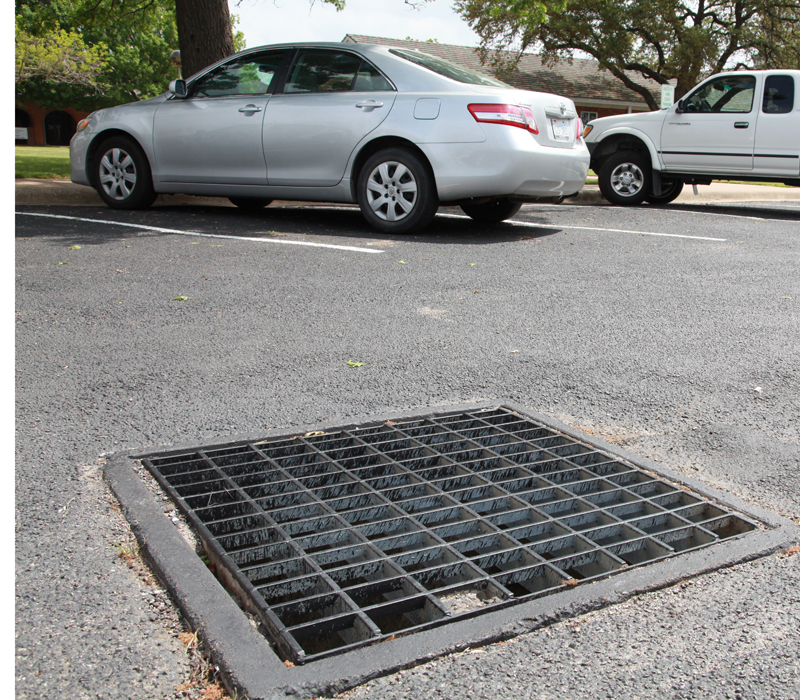A recent article in the Journal of Medical Entomology on mosquitoes and sewers caught my eye–yep, I know, most people would skip that one. But the study does shed light on an important public health topic, namely factors that can influence the spread of West Nile virus (WNV) and other mosquito-borne diseases.
Allison Garner (University of Illinois-Urbana) and colleagues conducted their study in a Chicago area residential community during the summer of 2010. They looked at mosquito breeding in sewer catch basins over the course of a summer. Sewer catch basins are found under grates on streets and parking lots. They are designed to catch some of the mud and trash that falls into sewers during rain storms, helping keep it out of larger catch basins or streams.
Now sewer catch basins are not generally nice places to be, but mosquitoes seem to like them. Garner and coworkers sampled mosquito larvae from 19 catch basins over the course of a mosquito season and found a strong correlation between dry, hot weather and Culex mosquito populations. Culex mosquitoes are the most common vectors of WNV in Texas. They are one of our container breeding mosquitoes, but are most commonly found in dirty, yucky water where fish and other mosquitoes don’t survive well.
Now the interesting thing about the Illinois study is that mosquito numbers were very low after periods of rainfall, but highest during the hottest and driest part of the summer. This is the opposite of what most people think about mosquitoes, especially since the most obvious mosquito do occur right after a spell of rainy weather. So which is worse, wet weather or dry weather, for mosquitoes?
It turns out that wet weather mosquitoes, also known as floodwater mosquitoes, are larger and produce a more painful bite than the house mosquito in the genus Culex. Culex mosquitoes, on the other hand, are the ones that are mainly responsible for disease transmission in Texas. This correlates well with the patterns of WNV occurrence in the Dallas area. We see WNV occurring mostly in bird and human populations during mid- to late-summer, when storm drains produce the most mosquitoes.

Catch basins typically hold water for days to weeks after a rain. When leaves or grass clippings accumulate in the basins, ideal breeding sites for mosquitoes are created.
So why more mosquitoes during the dry season? The authors of the Illinois survey conclude that rains tend to scour the storm sewer catch basins and wash away any Culex larvae breeding there. When the temperatures warm, mosquitoes can breed more quickly. And when the inevitable dry spell arrives, the mosquitoes still have these stagnant catch basins all to themselves, perfect for breeding. Of course if the drought lasts too long, even storm sewer catch basins dry up and mosquito breeding slows. This may be at least part of the explanation of why during the extreme drought of 2011, we had one of the lowest number of WNV cases and deaths in Texas since 2002, when numbers were first recorded.
The message from all this is that we should not let down our mosquito defenses when the rains stop this summer. That’s when the Culex mosquitoes really become the problem. The most insidious part of the story is that the Culex house mosquitoes are very stealthy biters. They tend to be out at night, and the bites are not as noticeable or painful as the wet season mosquitoes. So if you are active outdoors in the evenings or early morning hours, don’t neglect mosquito repellent–even in the dry summer months. Once the temperatures get into the 60s and above, mosquitoes will be there.
For more information about different kinds of mosquitoes and mosquito control in backyards, check out the Mosquito Safari website.
